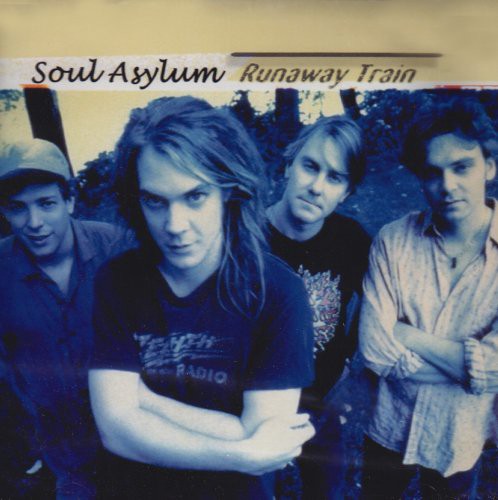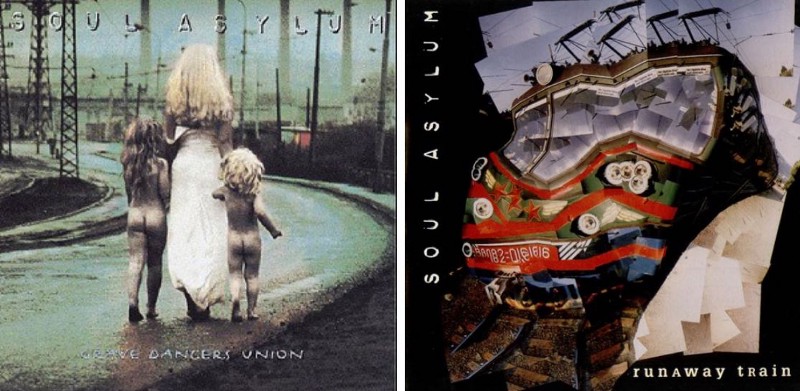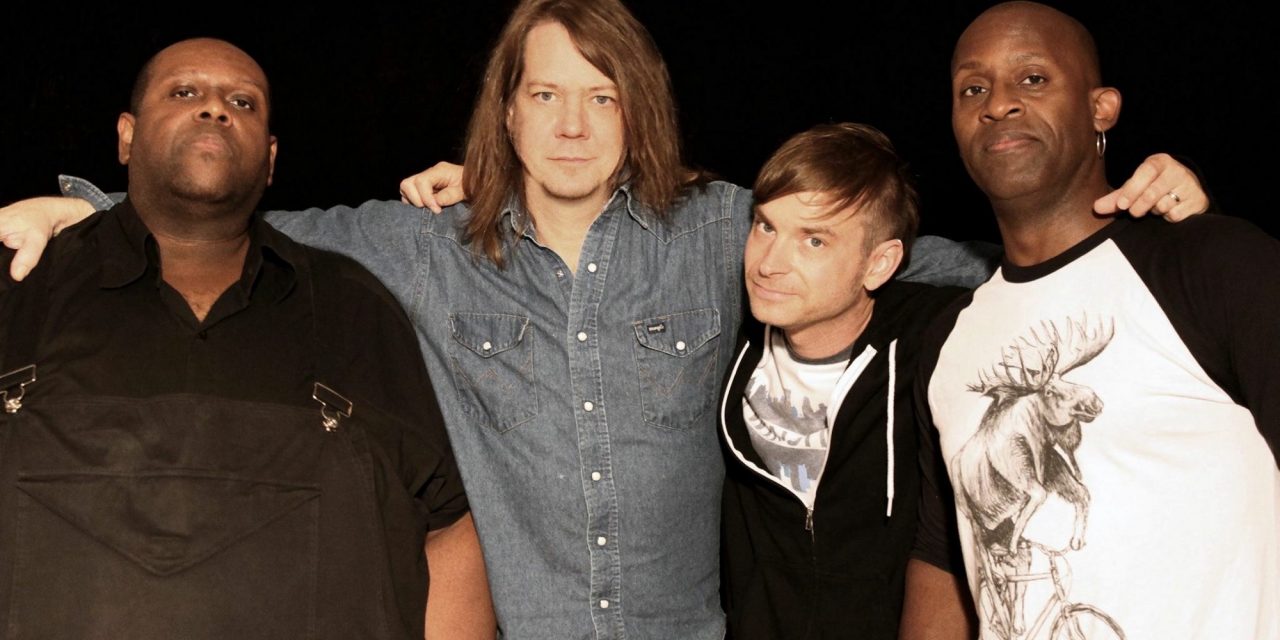On the silver anniversary of its official release, Pirner reflects on band’s most impactful hit

“Call you up in the middle of the night” — you sing those nine words and in response everybody knows what song you are gliding into. In fact, chances are “like a firefly without a light” will immediately be volleyed back to you.
“Runaway Train” by Soul Asylum. As the opening line suggests — it’s a brutally honest rock ballad that carved its place in history on its own. Frontman, Dave Pirner, has always been straightforward in explaining how “Runaway Train” deals with the complexities of depression. It’s fair to say it’s a song that thematically was perhaps ahead of it’s time.
“I was a key that could use a little turning”
“Runaway Train” takes responsibility, and that’s a big reason why it resonates deeply still — echoing consistently to the masses. By stressing the individual struggle, it offers a subtle – you are not alone. The vulnerability in Pirner’s voice allows for the most graceful of melodies to accompany the equally potent chords and lyrics. Depression is something that is ever-present today — within the arts and the great beyond. Lyrically, “Runaway Train” depicts the feeling of helplessness one wrestling with depressions feels better than any other song I have come across. But I’d like to halt the train on the tracks for a moment. As you will see, Pirner mentions that buried in the song about struggle is one glimmer of hope… “I can go where no one else can go, I know what no one else knows.” Sometimes that’s all it takes. One line. One hand. Ironically, that’s what “Runaway Train” has been for so many over the years. That extended hand of understanding.
But let “Runaway Train” serve as its own example. Its success is undeniable. The song itself was certified gold (selling 600,000 copies) and a key component to Soul Asylum’s triple-platinum record Gravedancers Union. As the third single to be released off the record (Yes, third… behind “Somebody to Shove” and “Black Gold”) it reached number five on the Billboard Hot 100, number two on the US top 40, and won a Grammy Award for best rock song in 1994.
By digging deep and stirring its creative voices, “Runaway Train” knew what no one else did. That one-way ticket put the song on a track that millions of people can still relate to. Sometimes there is nothing more comforting than the compassion exemplified by simply recognizing how challenging something like depression is and the toll it takes on your total being.
For Pirner, he put the pen to paper and the pick to the stings. As a result, it was one of the worlds most popular songs in 1993 and 1994, but furthermore, it offered an artistry that continues to be both a companion and a ray of light.
On June 1, 1993, “Runaway Train” was officially released as a single. Today, June 1, 2018, exactly 25 years later, Pirner invites us on-board.

What do you remember about writing “Runaway Train”?
I remember it well because I had to live through it. It was a melody I had in my head for a long time. It was based around the words “two souls” — it went like this, “Two souls laughing in the rain, one is crazy and the other’s insane.” That was the loop. I hadn’t pursued, it was just one of those musical things that gets stuck in your head. Eventually, I thought — OK, there has to be something to this. I hadn’t even recorded it. It probably took me a year-and-a-half before I made the connection with the train. Once I got the train on the track the rest of it came together.
It was also my first exposure to clinical depression. That’s the fascinating thing about it to me, people seem to identity with the song for their own reasons. Some people still associate the song with the video and the song itself has nothing to do with what’s in the video and runaway children. It was just this concept of “runaway” that was applied to the video. But the song itself is just a simple statement of insecurity. It’s talking about the downward spiral, which is what happens when you get sad. You can either come out of it or you can let it take you down. That’s what I was going through at the time. There is hope in the song too. “I can go where no one else can go, I know what no one else knows.” You are trying to overcome your own self-doubt.
This song was written in a really tough period of my life. I was going through some terrible shit. I thought I was losing my hearing. It has a lot to do with grabbing on to a thought that is devastating and not being able to get away from it. I couldn’t climb back up the downward spiral. That’s where the “Runaway Train” metaphor comes in. It’s interesting to now think about, I’ve never really had to talk about it much, usually people want to talk about the video and I have to explain to them that the song is not about kids at all.

Where was it written?
I was home in Minneapolis. I had walked away a little bit. We were supposed to go out on tour with Jane’s Addiction and I couldn’t do it. I wasn’t hearing right, and I was worried it wasn’t going to get better, which it eventually did. So, I had that loop going around in my head and I was trying to figure out what I was going to do with my life. Soul Asylum had been at it for 15 years and we hadn’t gotten anywhere. We had put out two records on a major label and the future was bleak. I had started playing the acoustic guitar a lot to help me rethink what I was doing. I ended up writing the songs for Gravedancers Union. It was just me and an acoustic — in my apartment feeling sorry for myself.
Did you know you had something special upon finishing and recording “Runaway Train”?
No, it was just another song. The record was finished and I started playing it for people. As I was looking for a manager, that was the first time I paused and thought — Wow, what is going on here? One guy in particular heard 45 seconds of “Runaway Train” and said “OK, that’s it. I want to manage this band.” He heard the song in a way that I never had. I was very taken back. I didn’t understand how that would make him want to manage my band, but it was more artistically calculated than I would have imagined. “Runaway Train” was the third single off the record. “Somebody to Shove” was first and it did very well, which I didn’t expect. Then “Black Gold” came out and when that song got popular it was the first time I realized I was delivering a message. The record was already doing well and then they released “Runaway Train”.

How did things change for you after that?
When we were recording the record, we could not get any basic tracks. Our producer, Michael Beinhorn was very particular about results. If he wasn’t hearing what he wanted to hear then we would have to do it over and over again. We were in a studio in New York and Michael kept hearing a sound that was like a screw on a vent, some weird sound that nobody else could hear. Finally, he made us move because he couldn’t take it anymore. As it turns out, he was not happy with what the drummer was doing. We had been in the studio for two weeks and not gotten a single result. It was New York City, everything cost a fortune. Even the whole band staying in New York, that’s not cheap. We had no choice but to bring in another drummer. It totally devastated the feeling of this do it yourself, homegrown, organic, four boys that met in high school and started a band. We didn’t listen to what anybody said. It was a big deal to bring in another drummer. Then Sterling Campbell came it to play drums and I was emotionally overwhelmed by how great my songs sounded when he played on them. I went back to the hotel and played the cassette of our daily rough mixes and I got all teared up. It was a groove and the way they were supposed to sound. At that point, there was no turning back. I love playing the drums and I think I have a good feel, but there’s a nuance to it that you can’t explain. Michael’s plan saved my life musically.
I remember being in Tokyo on the Gravedancers Union tour. After our show I felt awful. I thought we played horribly. I was sitting in a car shortly after the gig and I heard “Runaway Train” on the radio. I realized the difference and that was how it was supposed to go with a different drummer. That was the only part of the “Runaway Train” frenzy where I felt really spoiled. I had to get Sterling in the band. It was what’s right for the music and the music would suffer if I didn’t have him.
The rest of it was just a lot of work. We had so much on our plate. That wasn’t a bad thing, it just turned into this crazy media circus. A lot of photo shoots and publicity. It was distracting. It made no sense to me to go to Europe and do a publicity tour, but we weren’t going to play a single show. Fly some place for a photoshoot? I couldn’t grasp it. You put your head down and you power through it.
I make a lot of jokes about now, but “Runaway Train” helped me to continue doing what I am doing now. I stopped playing the song for awhile and people were not happy with that. It was a cliché, I left the song out of the set because I wanted the band to be challenged and not rely on the hit. I’d see people after the show and they’d tell me they drove four hours to the gig and all they wanted to hear was the one song we didn’t play. I thought it wasn’t worth it, we were talking about not playing it more than if we had played it. It’s a three-and-a-half-minute song and we’ve been talking about not playing it for ten minutes. To me, it felt effortless, but it was something people really enjoyed. Now I will play it any time.

What’s the emotion of seeing “Runaway Train” impact so many people? Even each night as you perform the song, 25 years later, to see people passionately sing back every single word? Given the subject matter you are speaking of and how genuine you are in the delivery, it must be pretty moving.
The analogy is Los Lobos and “La Bamba”. They had all these great songs they had written and then had this huge hit with “La Bamba”. By the time they were half way through touring you can tell they were almost making fun of the popularity. It made me proud of the fact that the song I have that people know and love came straight from the heart. I wasn’t singing a cover or a song about dancing. The reaction with “Runaway Train” is always more of an emotion you can see in people’s faces as opposed to people pumping their fist and jumping up and down. You often see couples in the crowd get very close when the song starts. It’s something people can relate to in an inward way. It’s fascinating to look at a crowd in a moment where they are all examining their own emotions.
All of this considered, what does “Runaway Train” mean to you now — 25 years later?
Getting the song out of my system was something very important to me. It still resonates for me. It’s timeless and it still feels like something that is about acceptance. Once I got past the psychological analysis where I knew this feeling of depression could happen to me again, it helped me pretty prepare myself. I remember being in the psychiatric hospital and you had to walk the gauntlet to get to the doctor’s office. It was a scary hallway where all the patients can roam free. This one particular dude was so nice to me on my walk to the doctor. He walked into the office with me and finally the doctor told him it was time to leave and he explained to me that he had dementia from aids. It put a huge perspective on my situation that I will never forget. The song reminds me that I am still keeping it in check.
~Dave Pirner, Soul Asylum
Catch Soul Asylum on the Rock & Roll Express Tour this summer with Collective Soul and 3 Doors Down. For tickets and more information visit: SoulAsylum.com

Follow Artist Waves on: facebook |twitter | instagram ~ sign up for our newsletter below

Produced/written by, and in collaboration with Jeff Gorra:
~ follow Jeff Gorra here on twitter
~ jeffgorra@artistwaves.com


